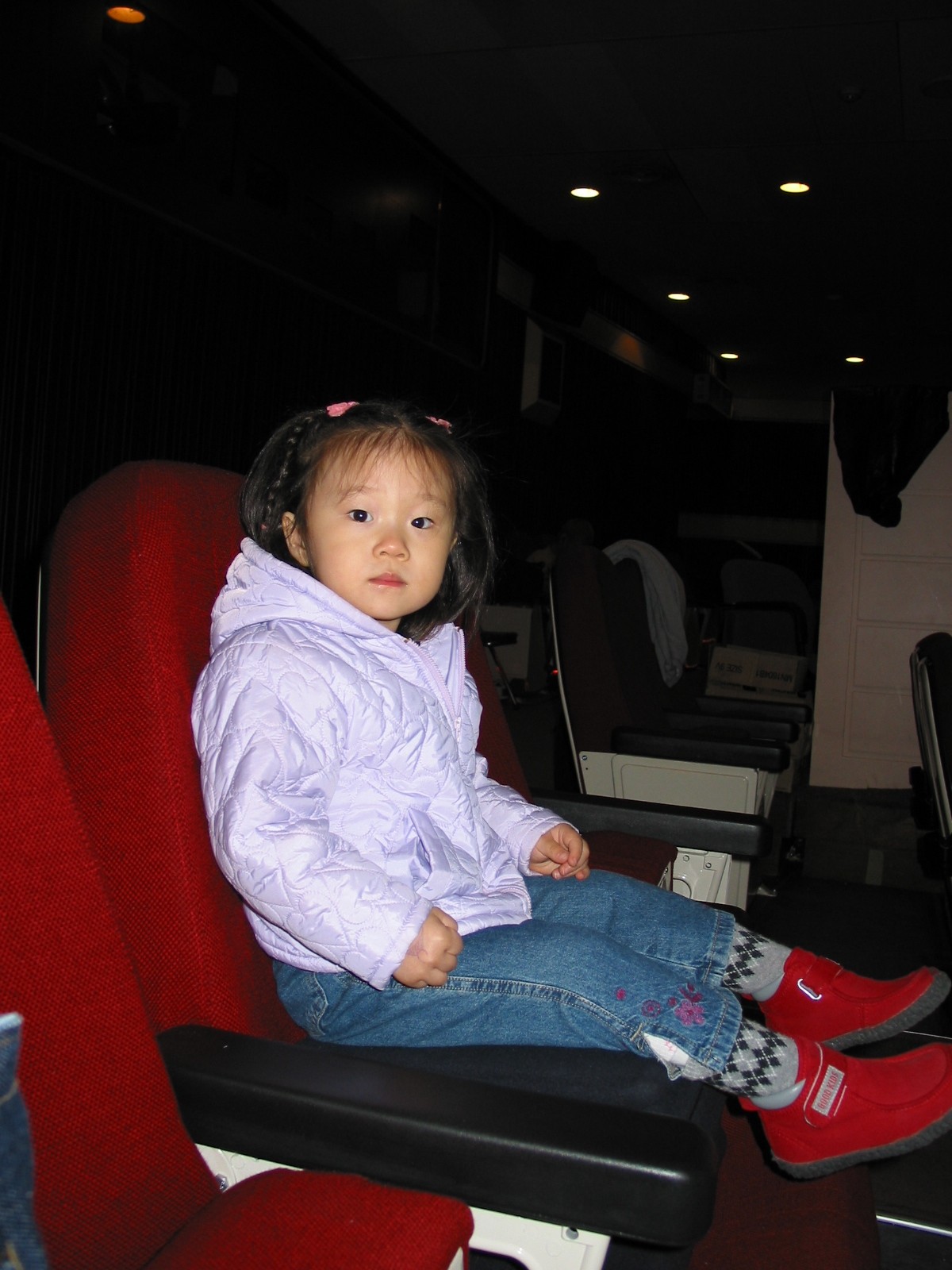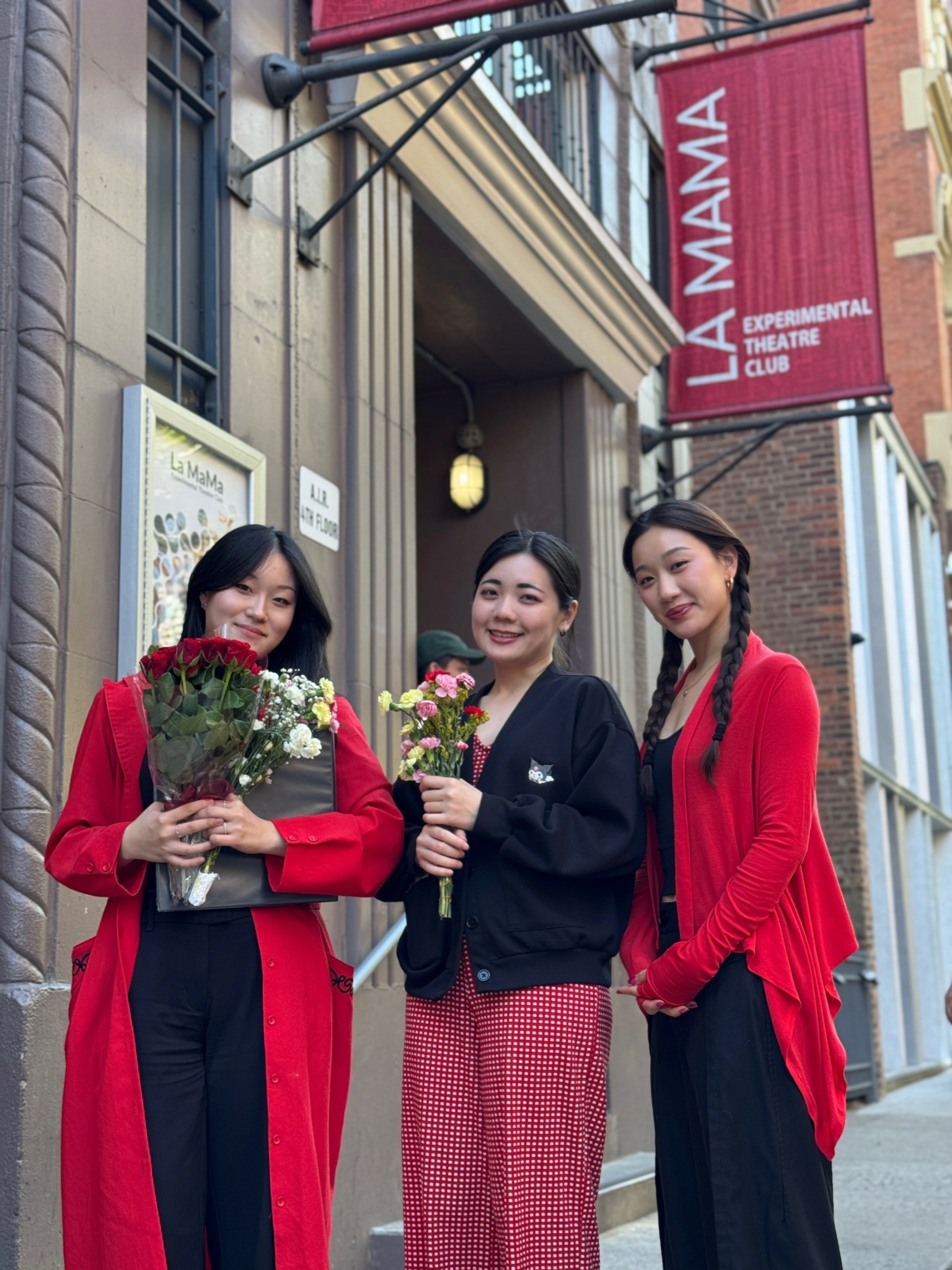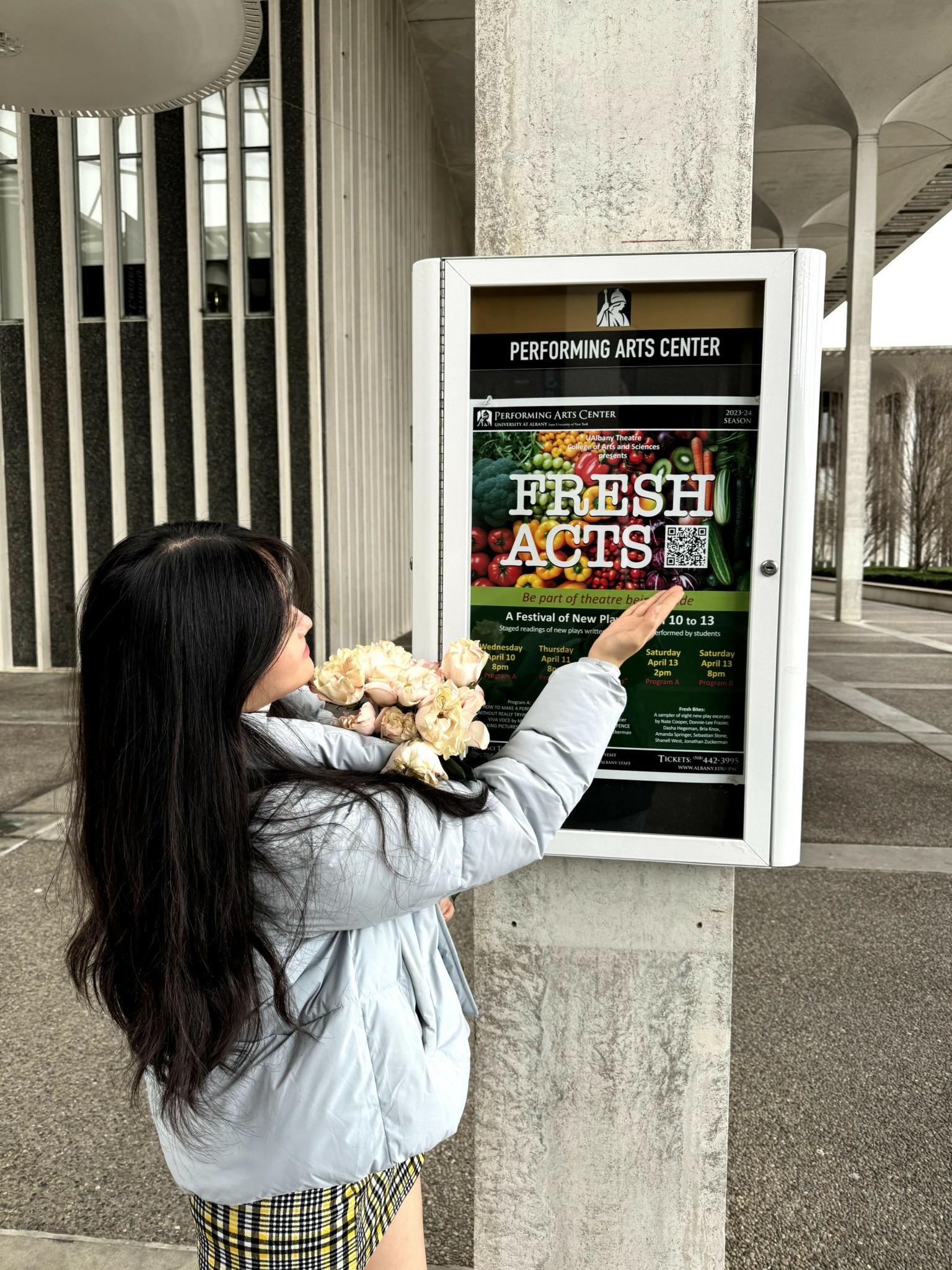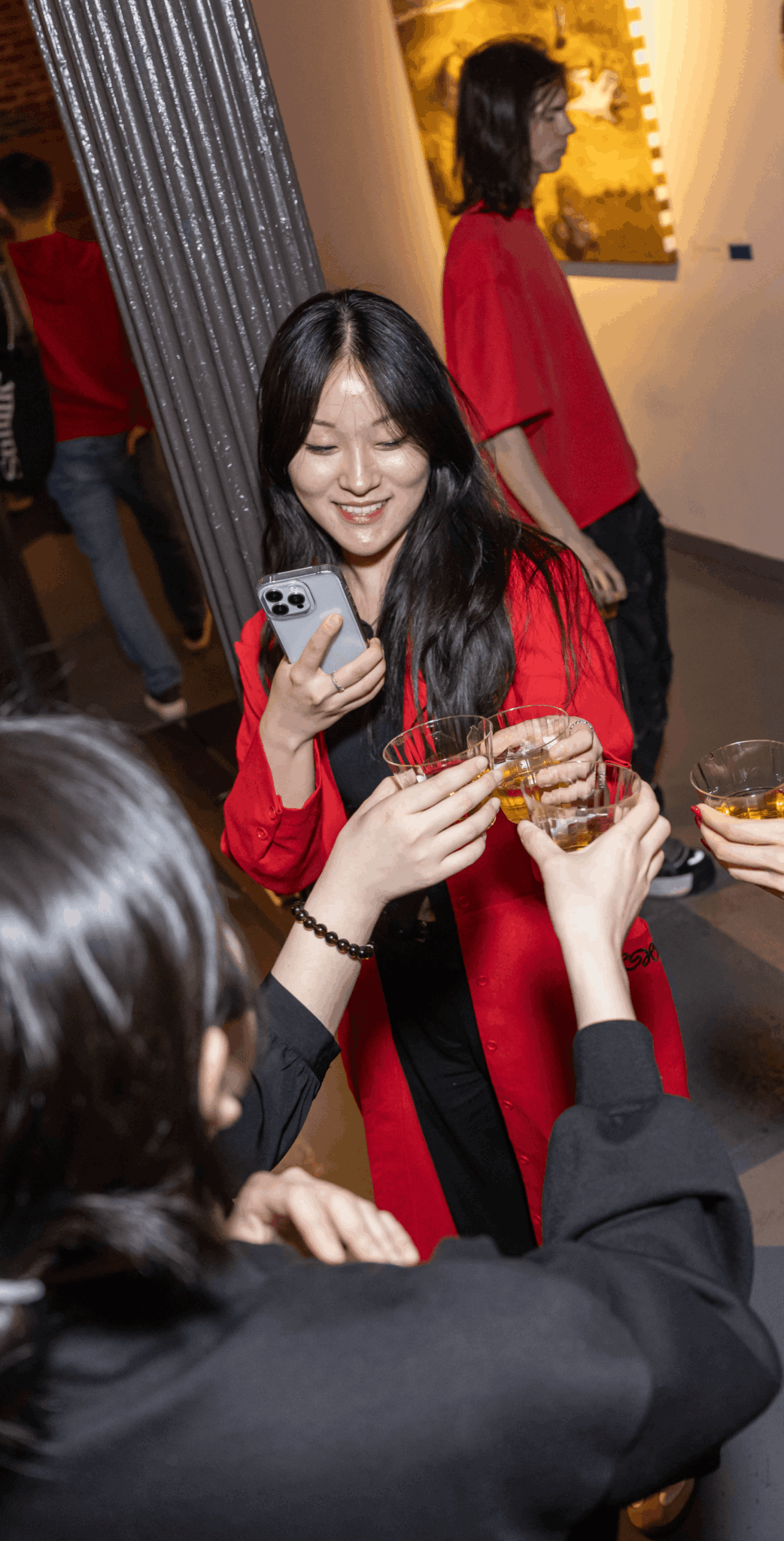We’re excited to introduce you to the always interesting and insightful Leona Koo. We hope you’ll enjoy our conversation with Leona below.
Alright, Leona thanks for taking the time to share your stories and insights with us today. When did you first know you wanted to pursue a creative/artistic path professionally?
I’ve never known a life without the arts. I was raised in an incredibly creative and artistic household—my father is a web designer, and my mother was an editor for a world-renowned fashion magazine. From a very young age, they exposed me to a wide range of artistic experiences: theatre, music, opera, visual art exhibitions—you name it. My childhood was filled with color, sound, and story. Some of my earliest and most vivid memories come from sitting in darkened theaters, watching the stage come alive before my eyes. Looking back, those early years weren’t just filled with beautiful moments—they built the foundation for how I saw the world and how I imagined my future.
Among all the art forms I encountered, I eventually found myself most drawn to theatre. It felt like the perfect blend of everything I loved: storytelling, music, and visual design. Theatre wasn’t just entertainment; it was an immersive space where emotions, ideas, and human connection converged. During my last year of high school, that passion took a more specific turn. I watched the filmed version of Hamilton—and it completely opened up a new world for me. The show’s inclusivity, cultural scope, and dynamic storytelling made a deep impression. It showed me that theatre could be more than a personal outlet—it could be a powerful tool for representation and change. Actors of color rewriting the founding history of America, as someone who had always longed to study and practice the performing arts in a broader, more expansive world, I knew in that moment that I had found what I wanted to pursue and dream of through theatre for the rest of my life. That moment shifted everything. I started to dream of pursuing theatre not just as a hobby, but as a lifelong professional path—and not just in Korea, but in the United States, where I could engage with a more globally diverse and artistically daring landscape.
That dream took shape when I moved to New York to begin my professional Theatre study. I fully immersed myself in every aspect of performance—acting, directing, technical theatre, marketing, and playwriting. But as I worked more behind the scenes, I realized I was most excited by the work that connects art with people: community engagement, production support, and audience outreach. I started to see the broader systems that shape the performing arts world—how stories are told, who gets to tell them, and how we build spaces for others to do the same. That curiosity led me to explore Performing Arts Administration more seriously, and eventually to NYU.
Looking back, pursuing theatre as a profession—especially moving across the world to do so—was a big leap. It meant choosing uncertainty over a more “traditional” path, and trusting that my passion for storytelling, creativity, and inclusive collaboration would guide me. And it has.

Awesome – so before we get into the rest of our questions, can you briefly introduce yourself to our readers.
Hi! I’m Leona Minseo Koo—a performing arts administrator, arts marketer, playwright, and passionate advocate for equity and access in the arts. I’m originally from Seoul, South Korea, and am now based in New York, pursuing my M.A. in Performing Arts Administration at NYU Steinhardt. My work lives at the intersection of creative storytelling, audience engagement, and institutional support for artists.
I grew up in a household that lived and breathed creativity—my father is a web designer, and my mother worked as an editor at a global fashion magazine. From an early age, I was surrounded by theatre, music, opera, dance, and visual art. That deep exposure to diverse art forms helped me understand the value of stories—especially those that reflect underrepresented voices and inspire dialogue. Eventually, I gravitated toward theatre because it integrates everything I love: narrative, sound, movement, and design.
I earned my undergraduate degree in Theatre with minors in Business and Psychology from the University at Albany, SUNY. During those years, I threw myself into every corner of the department: I acted, wrote plays, directed, worked backstage, led scene shop labs, and supported fellow students as a Teaching Assistant for the technical theatre course.
During my undergraduate years, I also took my first steps as a playwright. UAlbany hosts an annual student-led theatre festival called FRESH ACTS, which gives students the opportunity to submit original works and present them to fellow students and local community members. Inspired by my personal experiences, I wrote my first play titled How to Make a Perfect Resume Without Really Trying, which explores the lives of Asian immigrants and the complex dynamics that can exist between individuals from different Asian countries. The play was selected for the 2024 FRESH ACTS Festival and was performed on two of the five festival days. This experience marked the beginning of my journey as a playwright and deepened my professional understanding of both playwriting and theatrical production.
Since beginning my Master’s in Performing Arts Administration at NYU, I’ve gained a wide range of experience within New York’s performing arts scene. As a Marketing Intern at American Ballet Theatre, I led projects in audience analysis, financial benchmarking of arts institutions, and brand partnership development. I also worked as a Acquisitions and Artistic Development Intern at Concord Theatricals, where I supported the development and licensing acquisition of new theatrical works and gained comprehensive insight into the commercial theatre industry.
Most recently, one of the most significant steps I’ve taken toward entering the professional industry was making my Off-Off Broadway debut this past May through NYU Production Lab’s Arts Student Incubator Program. My short play Apt. 8E—a reflection on Asian cultural diversity in New York—was presented as a staged reading at La MaMa Experimental Theatre Club. I was involved in every stage of the project, serving as the playwright, director, producer, and even an actor. I managed the full development process, from casting and auditions to rehearsals and final presentation. This experience marked a major milestone as I successfully completed my Off-Off Broadway debut.
What makes me unique is my position within the performing arts industry: I am both a performing arts administrator and a performing artist. I don’t just support the arts from the outside—I live and breathe the creative process from the inside. My dual perspective allows me to understand the needs of artists on a deeply personal level while also thinking strategically about how institutions can better serve, uplift, and connect with them.
As a playwright and performer, I know what it feels like to build something from the ground up, to shape stories that reflect lived experiences, and to collaborate with creative teams under real-world constraints. As a marketer, researcher, and administrator, I know how to translate that creative vision into audience engagement strategies, funding proposals, licensing opportunities, and community outreach.
This balance between creative insight and administrative skill allows me to act as a bridge—between artists and institutions, between stories and audiences, and between passion and sustainable infrastructure. Whether I’m managing a theatre festival, analyzing audience data, or writing a new play, I approach every project with a full understanding of both the artistry and the systems that make the work possible. That’s what drives me—and what sets me apart.

Is there mission driving your creative journey?
As an Asian woman in theatre, I carry a mission that’s deeply personal: to bring more Asian stories, voices, and performers to the stage.
Throughout my four years studying theatre as an international student in the U.S., I often found myself as the only Asian face in the room. While my department was welcoming and inclusive in many ways, the lack of Asian representation—onstage, behind the scenes, and in the curriculum—was glaring. I often felt the unspoken pressure of representing an entire community, of being “the one” who explains cultures, corrects assumptions, and stands in for a broader, diverse experience.
But instead of feeling defeated by that pressure, I chose to transform it into purpose. I enrolled in a playwriting class and wrote my first one-act play, How to Make a Perfect Resume Without Really Trying, which explores the layered dynamics of Asian immigrant identities. It was selected for production in our department’s annual student-led festival, and I didn’t stop there—I actively recruited Asian students to perform, many of whom had never seen themselves reflected on stage before. That process helped me realize just how many Asian students were interested in theatre but hadn’t felt invited in.
That was the turning point. I understood that my creative journey isn’t just about telling my own story—it’s about opening the door for others to tell theirs. I want to be a part of building a new kind of theatre—one where Asian characters are more than side roles, where our stories are not tokenized, but centered, celebrated, and complicated in all the right ways. I want to create platforms for Asian creatives and challenge the industry’s narrow ideas of who belongs on stage.
This is also why I write. Theatre is one of the most powerful ways we shape cultural memory, and Asian stories—especially those written by and for us—are still far too rare in that space. I write to fill that gap, and to inspire others who may be quietly wondering whether their voice matters in an industry that hasn’t always embraced them. I want to help dismantle barriers and build systems that make room for all of us. Because the stage should reflect the world we live in, and that world is beautifully, powerfully diverse.

What’s the most rewarding aspect of being a creative in your experience?
The most rewarding aspect of being a creative is the ability to connect people—especially through stories that reflect lives and voices that aren’t often centered on stage. I find immense joy in crafting narratives that are both entertaining and eye-opening, particularly when they shine a light on communities that have historically been overlooked in the arts. It’s incredibly fulfilling to see how storytelling can become a bridge—something that helps people relate to experiences outside their own in a way that feels joyful, meaningful, and emotionally resonant.
As an Asian woman in theatre, I’ve always been sensitive to the lack of representation—not just in who’s on stage, but in whose stories are being told. That’s why I started writing my own plays. I wanted to create narratives that speak to the Asian immigrant experience—not as a side plot, but as the heart of the story. I wanted to give voice to the nuances, tensions, humor, and beauty of that identity, and make space for Asian characters who are fully human, complex, and central.
One of the most powerful experiences I’ve had so far was with my play Apt. 8E, which premiered as a staged reading at La MaMa Experimental Theatre Club through NYU’s Production Lab. The play explored cultural identity and generational tension within the Asian immigrant community in New York. After the performance, I had several audience members—many of whom had never seen a story like that on stage—come up to me and say, “This made me think differently,” or “I feel like I finally saw a piece of myself.” Others who weren’t familiar with Asian culture shared that the play helped them understand a new perspective in a way that felt natural and engaging, not like a lecture but a conversation.
That feedback meant everything to me. It reminded me why I do this. It’s not about writing a “perfect” play—it’s about creating space for empathy, laughter, recognition, and reflection. It’s about helping someone feel seen, or helping someone else see with new eyes. And when a piece of art can do that—even just a little—it becomes more than just a performance. It becomes a shared experience, a seed of connection that can grow into greater awareness, compassion, and community.
Contact Info:


Image Credits
Michael Hull


